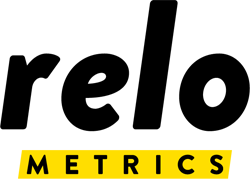Measuring TV commercials is complicated enough – let alone measuring the impact of sports sponsorships.
Relo Metrics is one of a handful of companies capitalizing on this niche measurement gap. It specifically measures sports sponsorships on TV and in digital channels, including brand and logo placements visible during a televised sports game.
Relo Metrics first launched within contextual ad platform GumGum as GumGum Sports in 2017. After a $75 million investment led by Goldman Sachs Growth in 2021, the GumGum sports division was spun off and reintroduced as Relo Metrics, which now operates as a standalone company.
Brands want to cash in on live sports and the recent rise in sports livestreaming. But they need to understand the performance of their sponsorship investments alongside their TV and streaming ad campaigns, Relo Metrics CEO Jay Prasad told AdExchanger. Prasad is a longtime data and measurement executive who previously held chief strategy roles at LiveRamp and VideoAmp before taking the helm at Relo in October 2022.
Most importantly, Prasad said, connected TV ad measurement is transitioning from panel-based to impression-level reporting – and that includes brand sponsorships within sports.
Relo is “actively experimenting” with how to unify measurement between classic TV ads and nontraditional brand placements, namely sponsorships, Prasad said.
Prasad spoke with AdExchanger.
AdExchanger: What challenge is Relo addressing?
JAY PRASAD: Sports programming has been an especially wide gap in TV measurement because so much sports consumption happens via over-the-air broadcast. Historic TV audience panels are not only small; they don’t adequately count broadcast TV households.
Even with sports livestreaming on the rise, US viewers still watch roughly 80% of live sports competitions like hockey and basketball via local broadcast, according to our analysis, and these viewers are underrepresented in small audience panels. Buyers need much denser data sets than panels to accurately measure impressions for sports programming – including sponsorship placements on-screen.
How exactly does Relo Metrics measure sports sponsorships?
We ingest broadcast data directly from TV programmers, streaming services and regional sports networks. Using computer vision, we identify logos or other sponsor placements within three-second frames.
Then, we score the quality of the sponsorship placement, such as how many times it appeared and for how long, whether it was prominently in view and how many other sponsors were present. We take into account the costs of running a 15- or 30-second commercial within particular sports games to determine the impression value of sports sponsorships.
We also directly survey sports fans that have watched particular events.
How do media buyers combine these results with audience measurement?
We have relationships with nearly all of the major streamers and TV networks, so publishers can combine Relo Metrics in measurement reporting for buyers.
We’re also creating new brand metrics specifically for sports. One example is return on fan engagement, which is based on a comparison of brand recall and favorability between fans who watched a particular game on TV versus in person.
Does Relo Metrics have relationships with other measurement providers?
Yes. We partnered with data and measurement company Captify earlier this summer to add more search data to our reporting. Now, we can tie search lift to specific markets or regions to measure the sponsorship impact during and after a game.
Last year, we also integrated with VideoAmp to bring its TV viewing data – including set-top box data and automatic content recognition from TV devices – into our platform to more accurately measure brand exposure throughout a live event. More household-level measurement helps tie ad exposures to actual identifiers, which is creating more opportunities for attribution.
Does Relo Metrics also measure sports sponsorships beyond TV?
We also have a presence on social media. We license data from X to analyze its feed, for example. Our clients ask for engagement data from league and player accounts, which we report on based on clicks and shares for sponsored posts during and after a game or match.
During the Olympics, for example, we measured campaigns for three big brands that partnered with athletes for social media content. The Olympics were especially hot on digital and streaming platforms this year.
This interview has been lightly edited and condensed.
For more articles featuring Jay Prasad, click here.
















